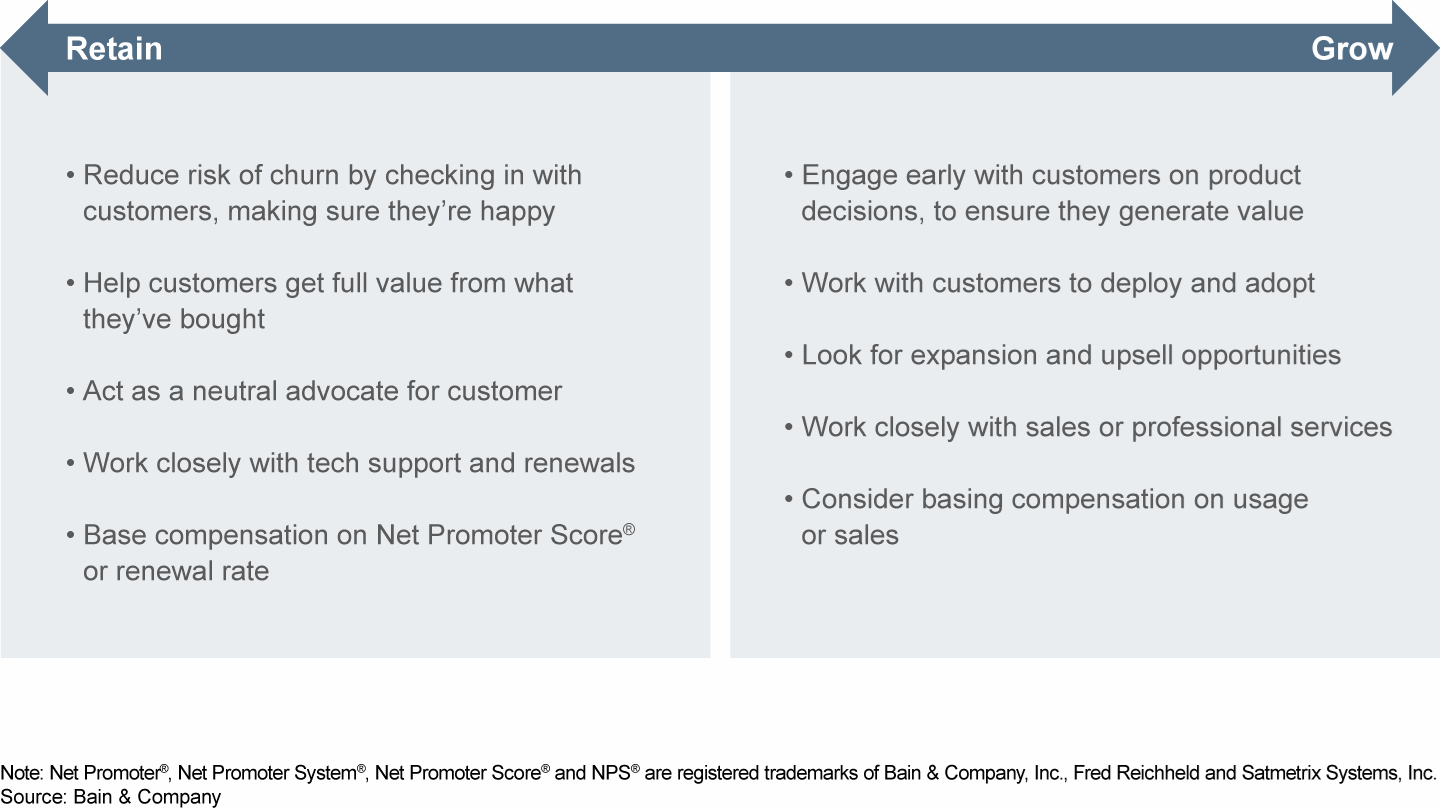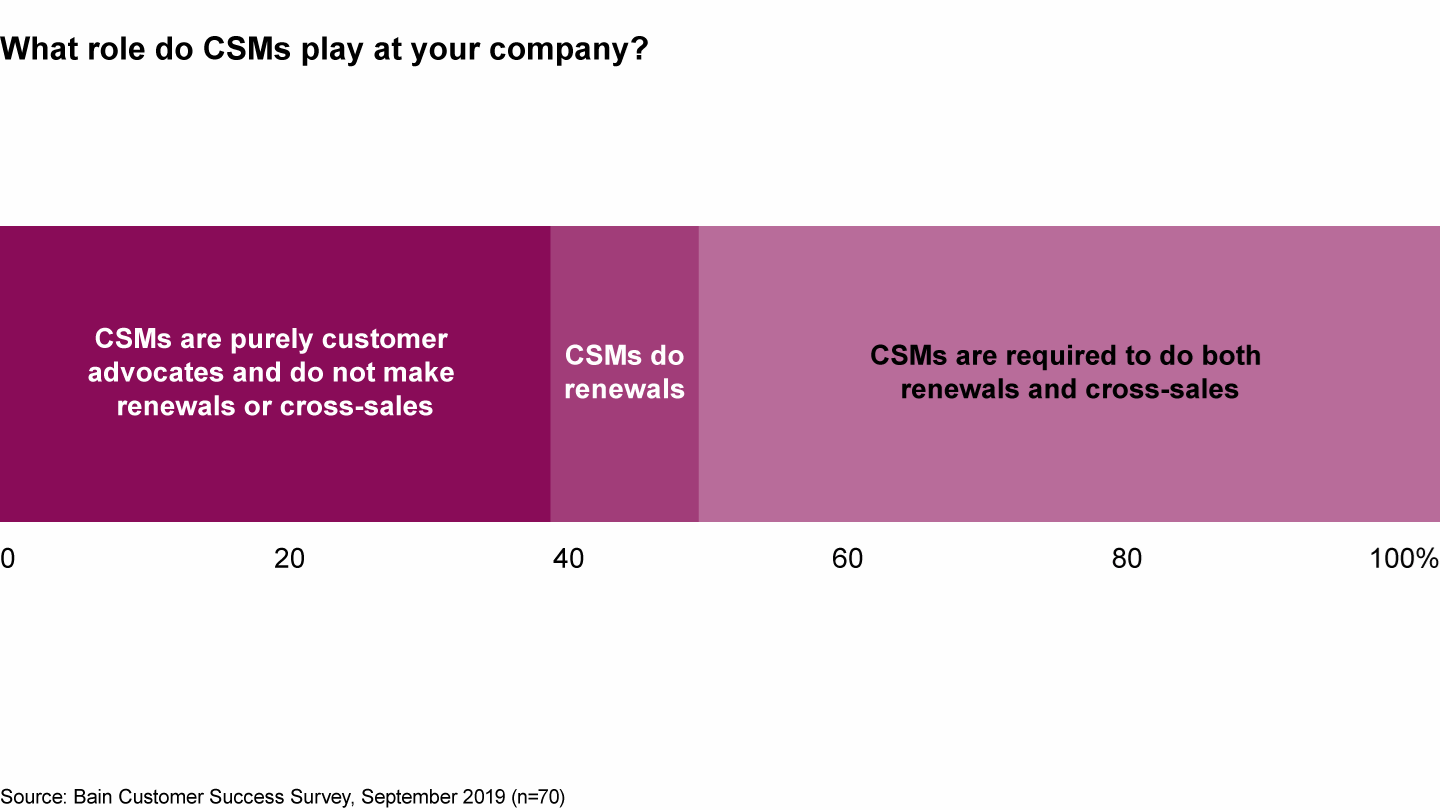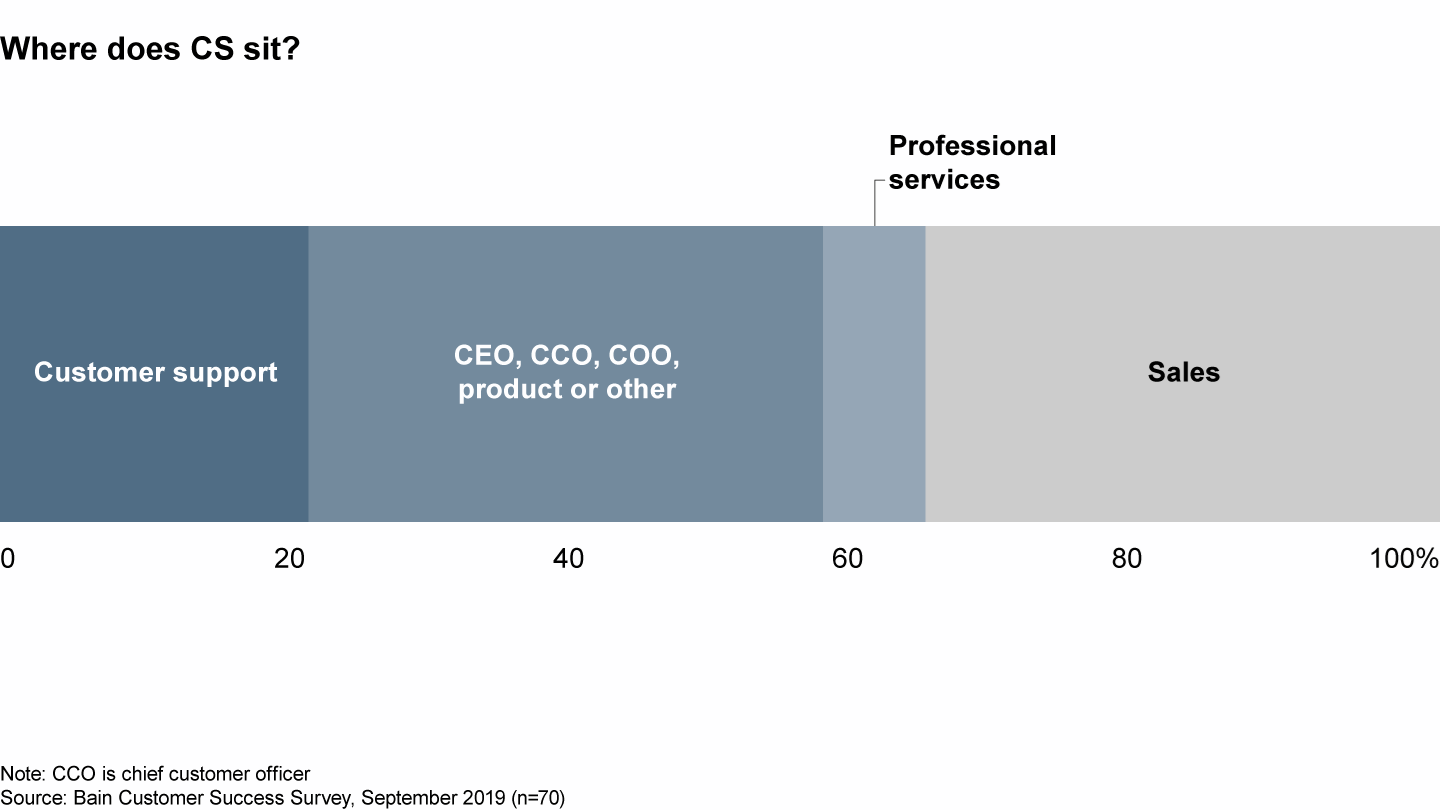Article

The customer success model remains a pretty fresh concept in software, and many executives are still trying to figure out exactly where this function fits in their companies. Neither sales nor technical support, customer success managers (CSMs) can be advocates for customers, working closely with them to make sure they get full value from their purchase—with the goal, of course, of ensuring less churn, more renewals and future related sales.
So where does the role sit organizationally, and what are the right incentives to align the efforts of CSMs with the broader goals of the company? It depends on the company’s mix of product maturity (for example, legacy vs. software as a service, or SaaS) and commercial goals (including renewal, expansion and cross-sell). Understanding those can help executives place their CSM teams somewhere on a spectrum between retention and growth (see Figure 1).
Software firms position customer success teams differently, depending on strategic goals


Software companies whose revenue streams depend on a large installed base of products may want to focus their CSMs closer to the retention end of the spectrum (see Figures 2 and 3). These CSMs frequently take over the relationship after a smooth handover from the sales team. They closely monitor the health of the account to guard against churn, and assess how well customers are using the product, whether they have the latest version (an indicator of churn) and whether they’re satisfying their original objectives. Organizationally, they fit well with the support or renewals teams.
About 40% of the companies that Bain surveyed lie closer to this end of the spectrum. At one large mainframe business where customers have been using the company’s mature products for a long time, the customer success model aims to keep customers up to date and ensure that they continue to see value from these products as their IT environments evolve. The goals are high scores on customer satisfaction and strong renewal rates.
In about 40% of companies, CSMs focus on customer advocacy; among the rest, they support renewals and cross-selling efforts


Software companies focused on growth place their CSM teams closer to the growth end of the spectrum, where we found about 60% of the companies we examined. These CSMs often enter the relationship before sales close. They help customers deploy the software and work with them to increase usage within their teams. While their primary goal remains ensuring that customers get the full value of their investment, they’re also working to identify other ways the software firm can support the customers’ business through related products and services. These teams fit well with sales or professional services.
Fast-growing SaaS companies position their CSM teams this way. For example, at one large and growing SaaS company, the CSM teams focus more on helping customers get value from their products, thus earning the opportunity to expand the number of applications on the platform.
Companies that depend on consumption for revenue, such as infrastructure- or platform-as-a-service (IaaS or PaaS) providers, lean even further toward this end of the spectrum, as they rely on the customer success model to deliver the revenue expectations of sales contracts.
About 20% of companies put CSM in customer support, while more than 40% place it in sales or professional services


Most CSM teams will find themselves somewhere in the middle of the spectrum, offering a balanced mix of these services. Knowing where they sit on the spectrum allows companies to get past the philosophical debates around how to organize and focus on building a model that improves customer experience and delivers on strategic goals.
Simon Heap and Jonathan Frick are partners, and Greg Fiore is a principal, in Bain’s Global Technology practice. Simon is based in Silicon Valley, Jonathan in London and Greg in San Francisco.